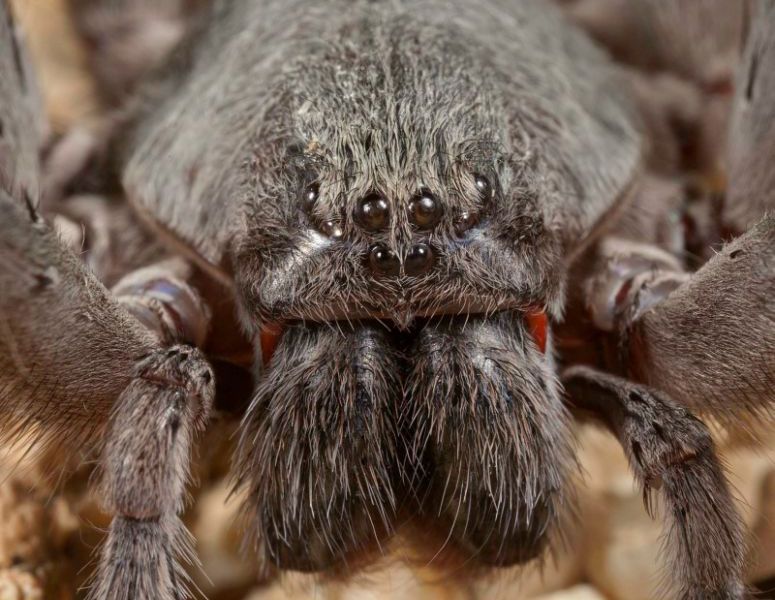
The first sign of a newly identified Mexican spider was an enormous, shed exoskeleton hanging from a cave ceiling.
Biologists were exploring the grotto in a mountainous region outside of La Paz in Baja California Sur, Mexico, when they found the light, papery remnant of a creature the width of a softball, Smithsonian reports. Later, they returned to the cave at night to find three, active, live spiders. That's when they thought they had a new species on their hands.
It was 2013 when they first found the spiders, which they took back and examined. Since then, several more have been found in human-made mine shafts. The hairy, brownish animal features a yellow back and has an inch-long body, but with the long legs, it spans four inches across.
Researchers at the San Diego Museum of Natural History, Centro de Investigaciones Biológicas del Noroeste, and University of Campinas published a paper on the new species in the journal Zootaxa.
This spider is called Califorctenus cacachilensis, or the Sierra Cacachilas wandering spider. Because of the shape of the head and other physical characteristics, the researchers immediately knew that it was a member of the wandering spider variety. One of its closest known relatives is the Brazilian wandering spider, which is one of the most deadly in the world. However, the Sierra Carachilas spider isn't deadly.
"I got bit while handling a live specimen of Califorctenus cacachilensis and I'm still alive," Jim Berrian, an entomologist at the San Diego Museum of Natural History said in a press release. "We haven't analyzed the toxicity of the venom, but most wandering spiders are not as dangerous as the Brazilian wandering spider."
The new wandering spider has formidable fangs, and, like all spiders, has venom. But it's distinct enough from the Brazilian wandering spider that it's actually in its own, new genus. They are notable for their yellow backs, large size, and preference for caves. Based on its body shape, researchers have determined that it is also closely related to spiders from Africa and Australia.
Uncommon Knowledge
Newsweek is committed to challenging conventional wisdom and finding connections in the search for common ground.
Newsweek is committed to challenging conventional wisdom and finding connections in the search for common ground.
About the writer
Kristin is a science journalist in New York who has lived in DC, Boston, LA, and the SF Bay Area. ... Read more
To read how Newsweek uses AI as a newsroom tool, Click here.








